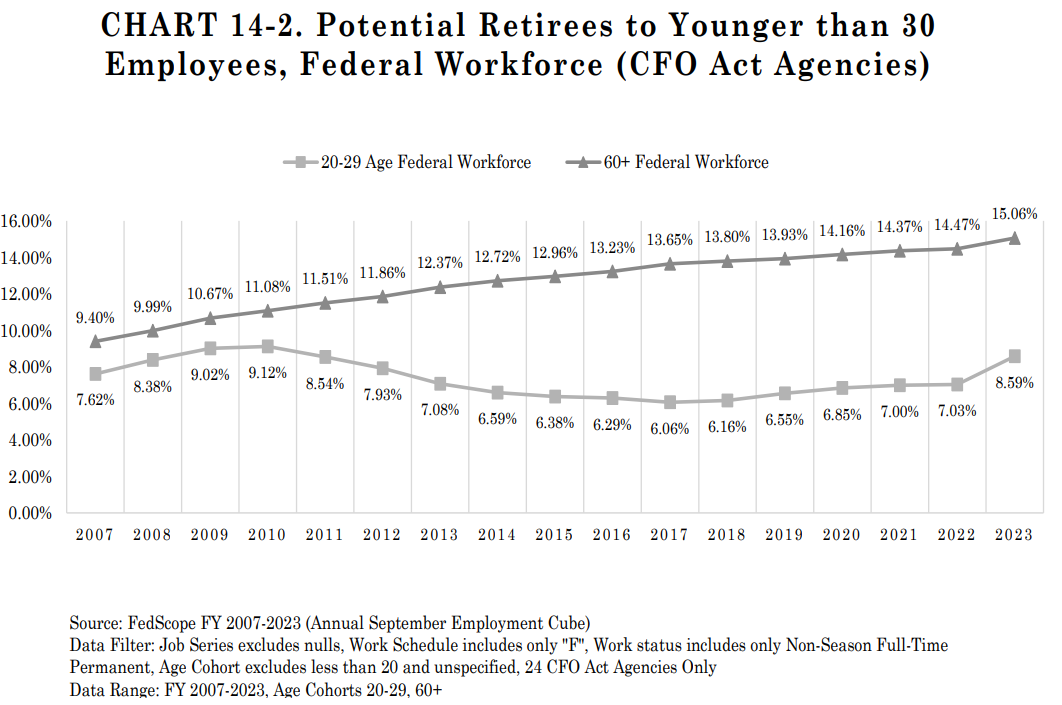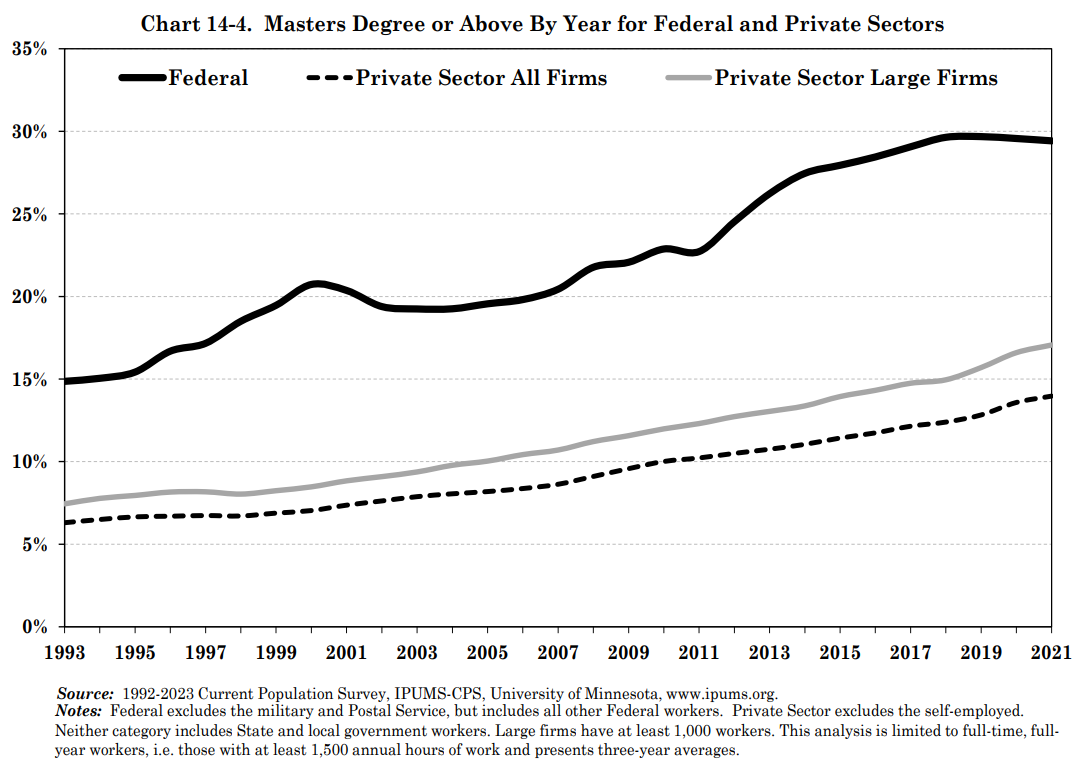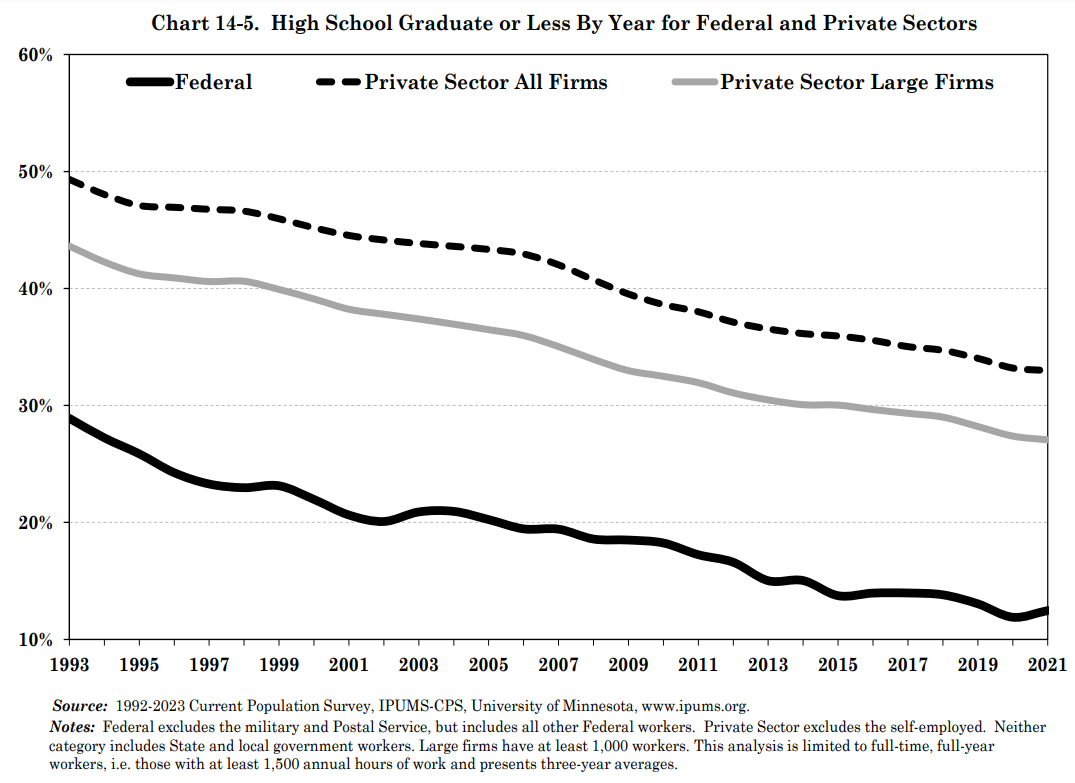Still ‘long way to go’ after 13% bump in federal early-career employees
Agencies have made progress ushering in more early-career employees in the federal workforce, but goals from the Biden administration aim to things up a notch.
The number of early-career employees who comprise the federal workforce has long trailed the workforce nationwide, but early signs are pointing toward a spur in the amount of younger talent at agencies.
Data from the Office of Management and Budget shows that between fiscal 2022 and 2023, the number of federal interns increased by 33%. And in just the last couple of years, there’s also been a significant uptick in the number of federal employees under age 30.
“We’ve grown that by 13%, but we still have a long way to go,” OMB Deputy Director for Management Jason Miller told lawmakers on the House Oversight and Accountability Committee during a hearing last week.
It’s a different data point than the proportional share of federal employees under age 30. In the Biden administration’s fiscal 2025 budget request, OMB reported an increase in the percentage of employees under age 30, rising from about 7% to now about 8.6%.

But overall, expanding early-career employees is a clear part of the White House’s fiscal 2025 budget request, and it’s been a growing priority for at least the last few years. OMB’s Miller told the Oversight committee he believes agencies are positioned for even more growth of early-career employees going forward.
“We are encouraging and creating platforms for agencies to hire interns across agencies so that open roles can be filled by people who have proven their skills in an internship,” Miller said during the hearing.
For instance, agencies just recently got access to a new intern conversion database from the Office of Personnel Management. In March, OPM launched the “intern talent program,” an online database for federal managers to look at all Pathways Program interns who are currently eligible for conversion into a full-time position. The database is available through the “Agency Talent Portal” on USAJobs.
Additionally, OPM recently updated the Pathways Program, aiming to expand opportunities for early-career employees. The new regulations place more emphasis on paid federal internships, allow for higher starting salaries for recent graduates, and allow credits from career and technical education programs to count toward Pathways hours.
Later this year, OPM also plans to create a governmentwide mentoring program for federal interns to connect across agencies and work more closely with senior leaders.
“Building a deeper pipeline of workers at the beginning of their careers will ensure that the government can meet its mission without interruption as workers retire,” Miller wrote in his Oversight testimony last week.
But agencies are still struggling to make that transition in their recruitment strategies. OPM said in its Workforce of the Future playbook that agencies often view early-career employees as short-term hires, and don’t necessarily incorporate them into their long-term workforce planning, or set aside positions specifically for younger talent.
Moving forward, OPM is still angling for agencies to take better advantage of early-career employees and make it an upfront priority, rather than an afterthought.
To reach more entry-level employees hired into government, OPM is aiming for agencies to “align early-career talent hiring with mission-critical occupation skills gaps, use Pathways and other avenues to bring in new hires, and ensure funding is set aside for paid internships and full-time employment for interns to convert into permanent positions,” OPM said in its playbook document.
A focus on skills for early-career employees
Part of the development of early-career talent also involves encouraging agencies to focus on skills-based hiring. It’s something that could be especially useful for the federal IT workforce, which has an even more distinct age gap than the federal workforce overall.
That’s part of the reason cyber leaders across government are now pushing for more skills-based hiring — or in other words, focusing on job candidates’ talents and abilities, while de-emphasizing education.
“We’re moving away from purely degree attainment as a proof point for accessing jobs,” Miller said during last week’s hearing. “Do you have the skills to do the work and the ability and the energy to come in and serve people? Our federal government should reflect the people that it serves. And frankly, I believe that would strengthen our performance on an ongoing basis.”
The White House has just committed to using skills-based hiring for most federal IT jobs, with OPM taking on the task of transitioning nearly 100,000 federal cyber and IT jobs to skills-based hiring by next summer.
“We’re competing for talent,” Miller said. “We increasingly need a set of highly technical skills.”
Still, there’s a long way to go. Currently, the share of the federal workforce with master’s degrees and above is significantly higher than that of the overall workforce. But the numbers have been slightly declining in recent years. At the same time, the portion of the federal workforce with only a high school degree is slowly rising.


On Capitol Hill, skills-based hiring strategies are a priority as well. Two bipartisan bills have recently cleared the Oversight committee, one aiming to push agencies, and another federal contractors, to recruit for their workforces using actual hands-on skills, rather than education.
“There are thousands of vacant federal IT jobs, and the federal workforce has four times as many IT workers over the age of 60, than under the age of 30,” Rep. Nancy Mace (R-S.C.), who introduced the two bills, said during last week’s Oversight committee hearing. “One part of the solution, I believe, is more creative hiring, thinking outside of the box.”
When asked about the legislation’s skills-based focus for federal recruitment, OMB’s Miller said, “it’s absolutely the right approach that we should be taking.”
Miller added, “If we’re leaving some of the country on the bench and not giving them access, we’re missing out on potential skills and expertise that could serve the American people in these roles.”
Copyright © 2024 Federal News Network. All rights reserved. This website is not intended for users located within the European Economic Area.
Drew Friedman is a workforce, pay and benefits reporter for Federal News Network.
Follow @dfriedmanWFED






